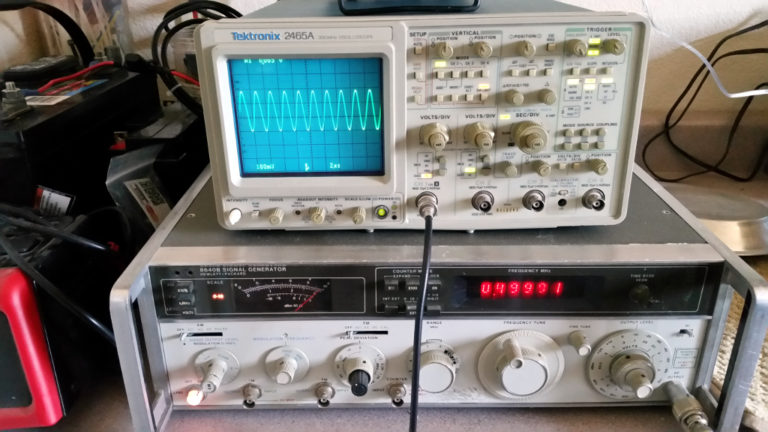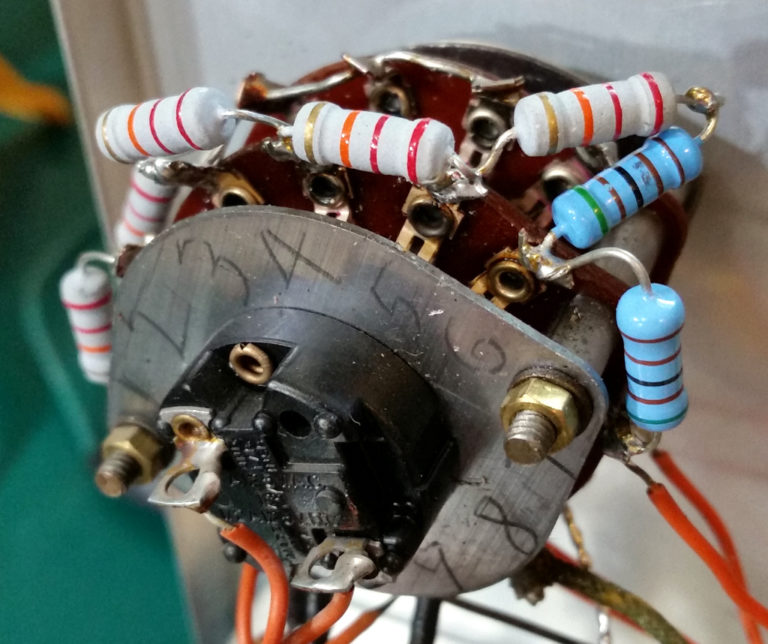Heathkit IG-42 Laboratory Generator – Initial Checkout

Heathkit IG-42 Laboratory Generator – Initial Checkout Filed in Heathkit IG-42 on Feb.25, 2018 I hooked up the Heathkit IG-42 Signal Generator to the variac on the bench and brought the voltage up slowly, watching for signs of overheating or failed components. There was a slight hum coming from the unit for the first couple of minutes, then it got better. I suspect that the electrolytic capacitors were recovering after having not been in use for some time. The IG-42 is rated for 100,000 uv output, with a 50 ohm output impedance. To check this against a known good source, I set up my HP 8640B signal generator for 0.1 volt output into the 50 ohm terminated input of my scope. 0.1 volt = 100,000 uv. 8640B Check Scope Calibration As the photo shows, I have about 0.28 vpp showing on the scope. To get the rms value from the vpp value, you first divide by 2, then multiply by 0.707 0.28 / 2 = 0.14 0.14 x 0.707 = 0.09898Â or approximately 0.1 vrms 8640B Output at 100,0


